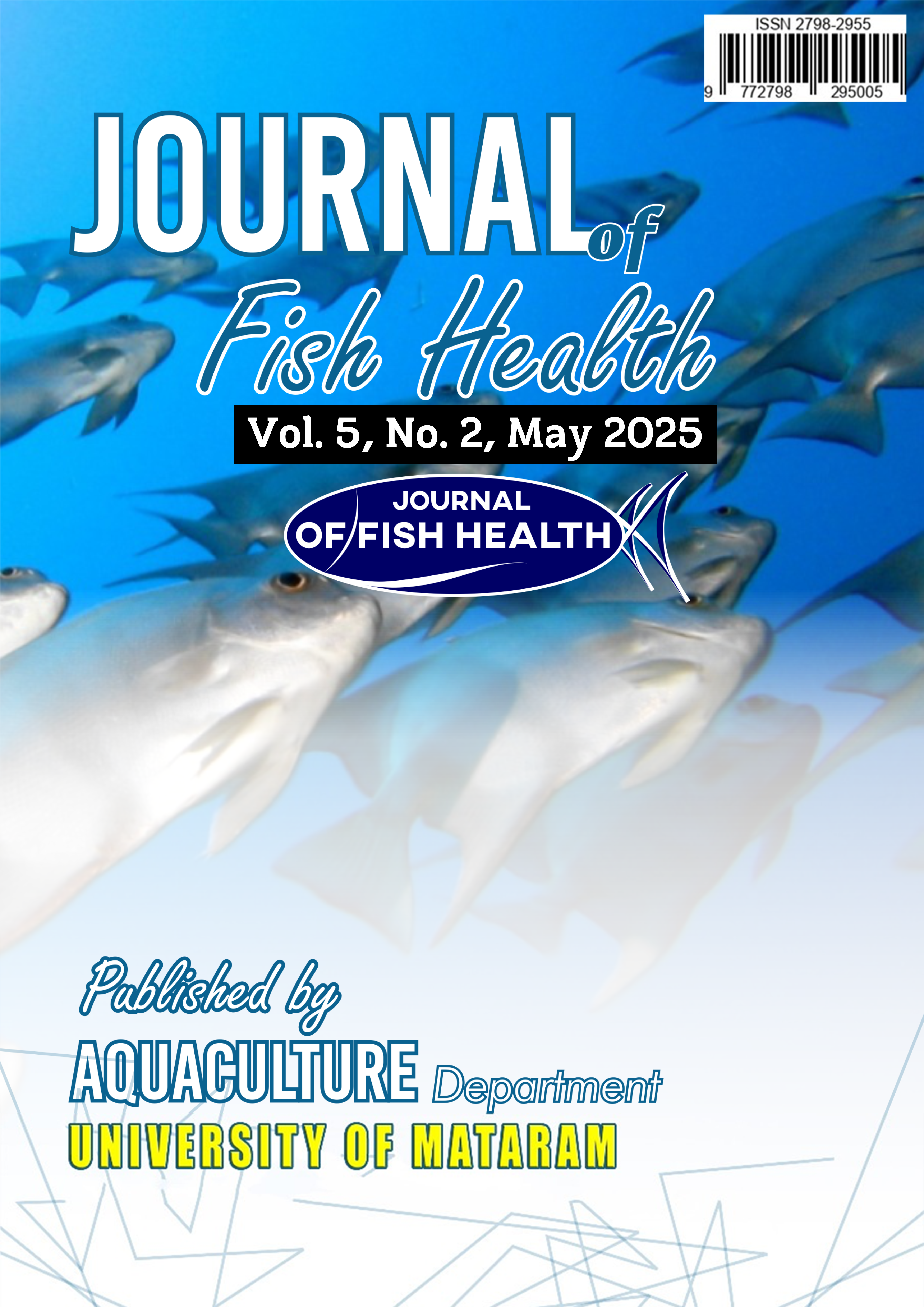Fisheries Management and Habitat Conservation at Kutaraja Ocean Fishing Port
DOI:
https://doi.org/10.29303/jfh.v5i2.6613Keywords:
Bycatch, Conservation Strategies, Marine Ecosystem, Sustainable Management, Thresher Shark FisheryAbstract
The Kutaraja Ocean Fishing Port (PPS Kutaraja) is one of the largest fish landing sites in Banda Aceh, playing a significant role in shark fisheries, particularly for thresher sharks (Alopias pelagicus). This study aims to describe the thresher shark fishery at PPS Kutaraja, assess the status of its utilization, and provide recommendations for sustainable management. The research was conducted through direct observations, interviews with fishermen and fishery business operators, and secondary data analysis. The results indicate that thresher sharks are primarily caught as bycatch using purse seines and longlines. The shark trade at PPS Kutaraja involves multiple stakeholders, from fishermen and intermediaries (toke bangku) to domestic and international markets. Habitat and ecosystem assessments reveal that seagrass and coral reef ecosystems along the Aceh coast are in moderate condition, while mangrove ecosystems remain relatively well-preserved. The composite evaluation of the Ecosystem Approach to Fisheries Management (EAFM) for habitat and ecosystem aspects scored 66.67, categorized as "good." However, the lack of data on key shark habitats, such as spawning, nursery, and feeding grounds, highlights the need for further research. To ensure sustainability, ecosystem-based management strategies, including establishing conservation areas and stricter monitoring of shark fishing practices, are recommended. Implementing effective policies will support the long-term sustainability of thresher shark fisheries at PPS Kutaraja.
Downloads
Published
Issue
Section
License
1. The copyright of this journal belongs to the Editorial Board, based on the author's consent, while the moral rights of the publication belong to the author(s).
2. The formal legal aspect of journal accessibility refers to the same Creative Common Attribution + Noncommercial + ShareAlike (CC BY-NC-SA), implying that publication can be used for non-commercial purposes in its original form.
3. Every publication (printed/electronic) is open access for educational, research and library purposes. In addition to the objectives stated above, the editorial board is not responsible for copyright infringement















